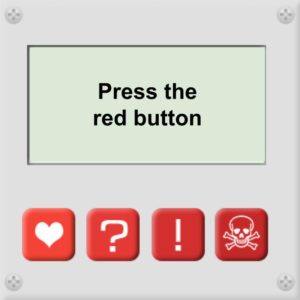IEC 62366-1 – Medical Devices – Usability Engineering : a Summary
Summary of the standard IEC 62366-1:2015 ( Medical devices — Part 1: Application of usability engineering to medical devices), taking into account the IEC 62366-2:2016 guide. Examples of methods to be implemented are also provided.
Scope of IEC 62366-1 Medical Devices – Usability Engineering
The standard focuses on the errors in use that can occur under normal conditions, the associated risks must be identified and considered in the design. The various tests will provide evidence for safe use.
Abnormal use (the user deliberately misuses) is not to be considered.
Normative references
IEC 62366-1:2015 focuses on misuse, it is only a complement to the ISO 14971 (Medical devices – Application of risk management to medical devices) used to manage all risks.
Terms and definitions
Below are terms specific to Usability Engineering :
- Abnormal use: Conscious, intentional act or intentional omission of an act that is counter to or violates normal use and is also beyond any further reasonable means of user interface-related risk control by the manufacturer.
- Primary operating function: Function that involves user interaction that is related to the safety of the medical device.
- Hazard-related use scenario: Use scenario that could lead to a hazardous situation or harm.
- Formative evaluation: User interface evaluation conducted with the intent to explore user interface design strengths, weaknesses, and unanticipated use errors.
- Summative evaluation: User interface evaluation conducted at the end of the user interface development with the intent to obtain objective evidence that the user interface can be used safely.
Principles
Usability Engineering applies to all stages of the life cycle of the device: use, but also transport, maintenance, disposal…
Usability Engineering concerns three aspects of your development:
- The User Interface (UI) of your device.
- The information provided (including labelling) where you specify normal use, actions in case of problems…
- The training provided to users (or trainers of users).
Your mission: to mitigate 3 sources of user error :
- Difficulty of perception (of an alarm, a marking, a command…).
- Difficulty of cognition (one does not understand anything about your interface).
- Difficulty of manipulation (the interface is nice, but not very practical).
Regarding the information provided to the user and the trainings: they carry a critical security information and should be :
- Comprehensive /Accurate /Effective
- Understandable
- Available
All of this is managed by taking into account the context of use.
Usability Engineering process
Context definition
- Defining the user profiles, patient profiles and the expected use environments.
- Define the intended use scenarios, broken down into tasks, using the previously defined profiles and environment.
Context definition methods:
- State-of-the-art documentary
- Interviews with users, distributors, competitors, patient associations…
Risk management
- Analyze the context to identify risks of misuse. It ends up with several dangerous phenomena.
- Describe the Hazard-related use scenario, they come from normal use scenarios.
- Note: we also take into account the risks controlled by involving the user (control option such as alarm, labelling, user training and warning in the operating instructions).
- If you have too many scenarios to test them all: specify a scenario selection scheme based on the level of risks.
Risk identification methods:
- State of the art: analysis of vigilance alerts on comparable devices or contexts
- User interviews
- Observation of the use of comparable devices
- Analysis of tasks (performed by the user)
- Analysis of primary operating functions (of the device)
Design
Take into account risk management, applicable standards (notably the IEC 60601-1 Medical electrical equipment), good practices; use solutions already controlled by users; call on an ergonomist…
Development
Carried out according to the design documents, the approach is iterative: we challenge the user interface as soon as possible, by formative evaluations.
Formative evaluations
The idea is to evaluate the user interface as it is being developed, as frequently as possible, to correct it as soon as possible.
The formative evaluation stops when you find that you can no longer improve the UI.
Examples of Formative evaluation methods:
- Cognitive journey: Evaluator puts himself “in the shoes”of a typical user
- Heuristic analysis: Analysis of UI according to different criteria: Clear device goals, appropriate feedback, allows focus on function used, user ownership of technology, freely controllable system, pace of tasks…
- Semi-structured interview: Interview with a user, around the device, guided by a grid
- User panel: Small group of users reacting around the device, facilitator collects opinions
Summative evaluations
This is the final stage: the device is tested by real users, in conditions of use as close as possible to those intended, but beware: it is not yet time for clinical investigation: the patient (if present, can be simulated) must not be affected clinically during the evaluation.
The summative evaluations implement the Hazard-related use scenario, ideally you have controlled the risks well and errors in use do not occur.
The device is as close as possible to the final device. You may have to make 2-3 changes to enable the evaluation (e.g. triggering an alarm via software, to verify that the user – who has not been warned – behaves as expected).
Avoid entrusting the evaluations to a member of the R&D, there will be a problem of objectivity.
Summative evaluation methods:
- Documentary equivalence: Based on data from a summative evaluation of a similar device.
- Simulated trials: Simulated use environment and/or patient (living lab, using a mannequin, via virtual reality)…
- Field trials: Real use environment, simulated use involving a patient (without clinical use).
Link to ISO 13485:2016
Usability Engineering activities are related to the product realization requirements of ISO 13485, particularly in 7.3 “Design and Development“.
Post-Market Surveillance activities will be used to update the context (uses change over time) and risks management.

